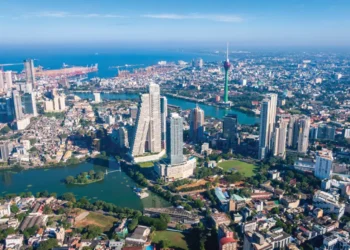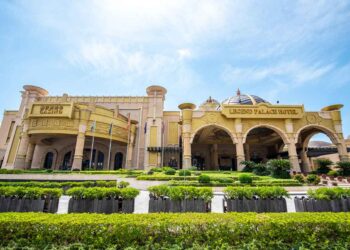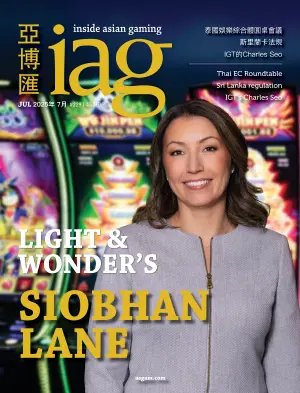Nagasaki prefecture has released its draft of the regional development plan to be submitted to the national government by 28 April for the Sasebo City IR bid at Huis Ten Bosch.
The draft was created by Nagasaki prefecture and Casinos Austria International Japan (CAIJ), the planned IR developer and operator. CAIJ is a subsidiary of Casinos Austria International, itself a subsidiary of Casinos Austria, Austria’s partially state-owned casino operating company.
The overall area has been expanded to 320,000 square meters, with the floor area of the entire IR to cover around 550,000 square meters.
Development cost is expected to be JPY 350 billion (US$3.08 billion) with plans to attract 8.4 million visitors annually and an economic ripple effect through Kyushu of JPY 320 billion (US$2.82 billion). It is claimed around 10,000 jobs will be created with the IR to generate an estimated JPY 30 billion (US$264 million) in combined annual revenue from taxes and entrance fees.
 A cable car is being considered as a means of travel from the JR Huis Ten Bosch station to the IR and the plan is for CAIJ to cover JPY 14.7 billion in infrastructure costs (US$129 million) such as port facilities around Nagasaki Airport, sewage and waterways.
A cable car is being considered as a means of travel from the JR Huis Ten Bosch station to the IR and the plan is for CAIJ to cover JPY 14.7 billion in infrastructure costs (US$129 million) such as port facilities around Nagasaki Airport, sewage and waterways.
The MICE facility with international conference halls has been changed to a unique design with curves. CAIJ is to work with its Austrian parent company to promote MICE and events both within Japan and overseas.
The expanded “Japan House” is planned to feature six above-ground and one underground level over a total area of 23,000 square meters, conveying both traditional arts and local Kyushu and Nagasaki features under the Cool Japan concept, as well as cutting-edge attractions.

The property is planned to include over 2,000 guest rooms under the concept of “New Fusion” with options from luxury hotel chains to European, high-end hot spring style accommodations. It has been revealed that Austria’s 5-star Hotel Sachar plans to be part of the project. Distinctive features include a high-end, hot spring Japanese-style inn, partnered with a medical institution to incorporate the culture of “Toji” or “hot spring cure” where hot springs are used as treatments through long-term stays at the site.
The casino space is set to be located at the rear of the IR site. The casino is designed with three floors based on customer segment and efforts will be put into anti-addiction measures through clock placement, forbidding ATMs in the vicinity and limits placed on wagers and time spent in the casino.
 Going forward, Nagasaki and CAIJ will refine the draft and aim to present it at the March 2022 Prefectural Assembly. However, there are also calls for detailed information on capital procurement and the companies that will make up the structure of the main management body. So far, such information has not been provided to the public.
Going forward, Nagasaki and CAIJ will refine the draft and aim to present it at the March 2022 Prefectural Assembly. However, there are also calls for detailed information on capital procurement and the companies that will make up the structure of the main management body. So far, such information has not been provided to the public.
In an interview with The Nikkei, CAIJ president Akio Hayashi stated, “We cannot reveal the names of the companies until the Nagasaki Prefectural Assembly in March 2022.”
When IAG asked a representative of Nagasaki prefecture about CAIJ’s capital procurement the only response was, “We are in the process of increasing the reliability [of capital procurement].”
The operator selection process in Nagasaki was particularly bitter, with rival bidders Oshidori International Development and NIKI Chyau Fwu (Parkview) Group both controversially claiming Nagasaki Prefecture pressured them to withdraw from the process. In August this year, an Oshidori spokesman speaking directly to IAG said, “The Nagasaki Prefecture has no other option at this point than to lie to cover up its corruption,” while NIKI representatives are on record as saying they “object to this process in its entirety” and that Nagasaki Prefecture “refused to provide any information in what is [a] very troubling process.”
Questions remain unanswered on the source of funding for the Casino Austria project, given that the multi-billion dollar scope of the project is substantially larger than any previously taken on by the company in its decades-long history.
The application period for the regional development plan ends on 28 April 2022.

































